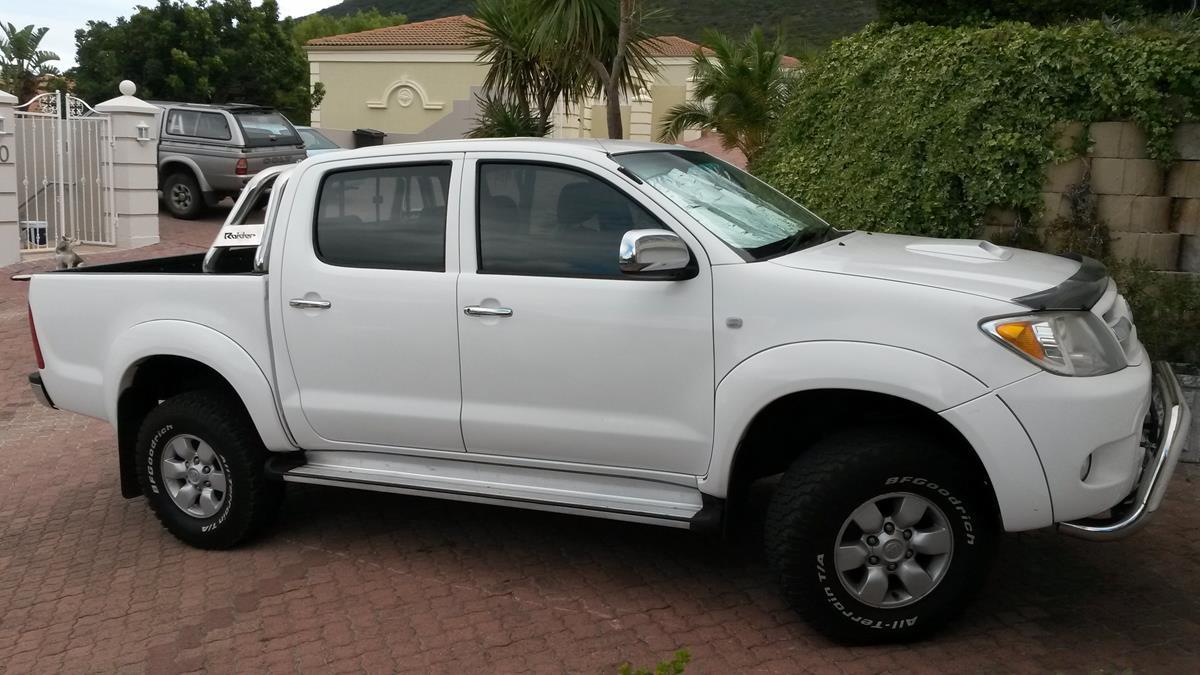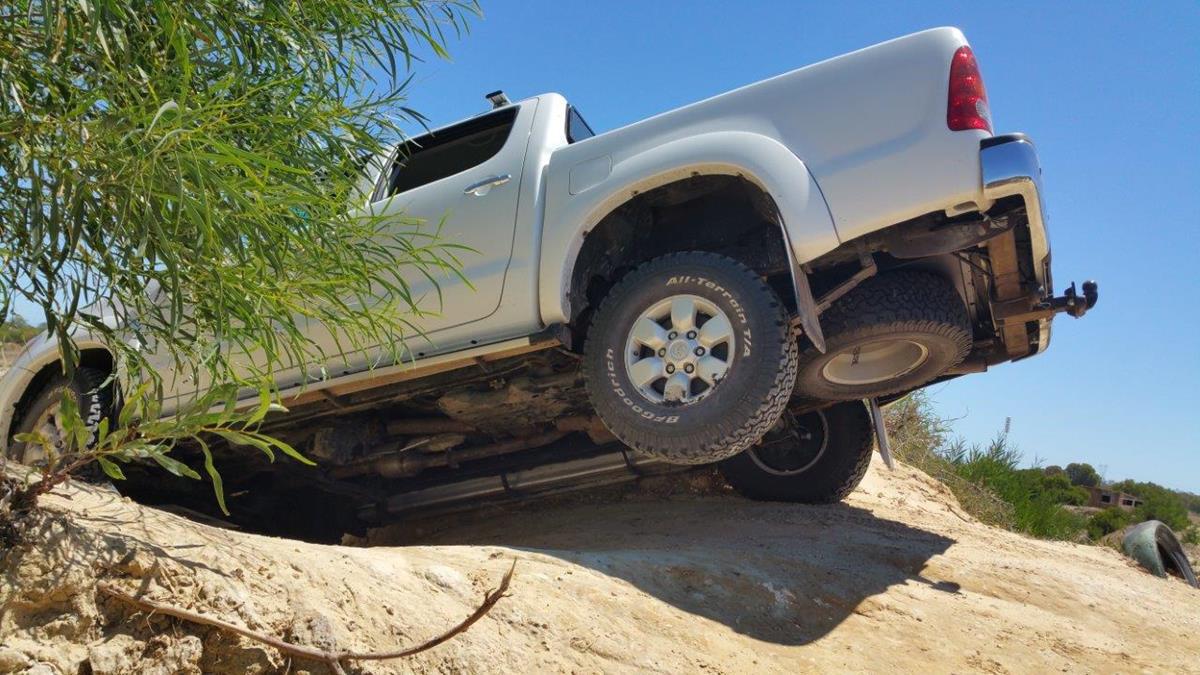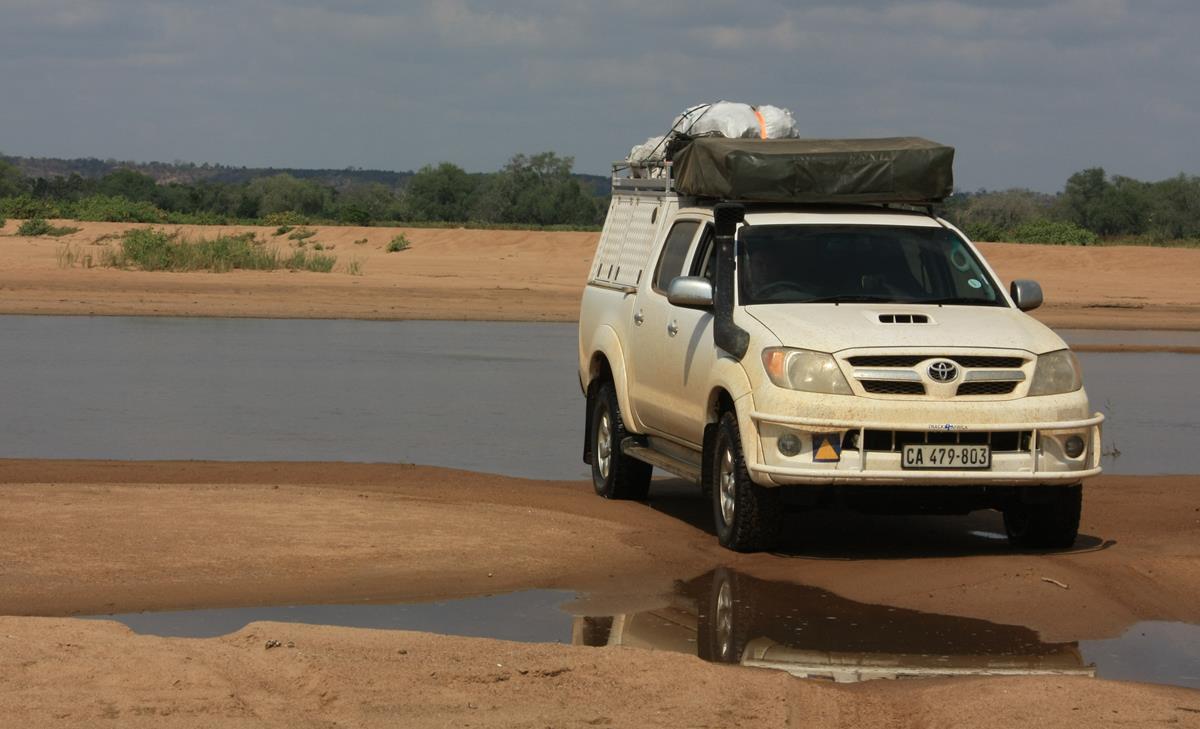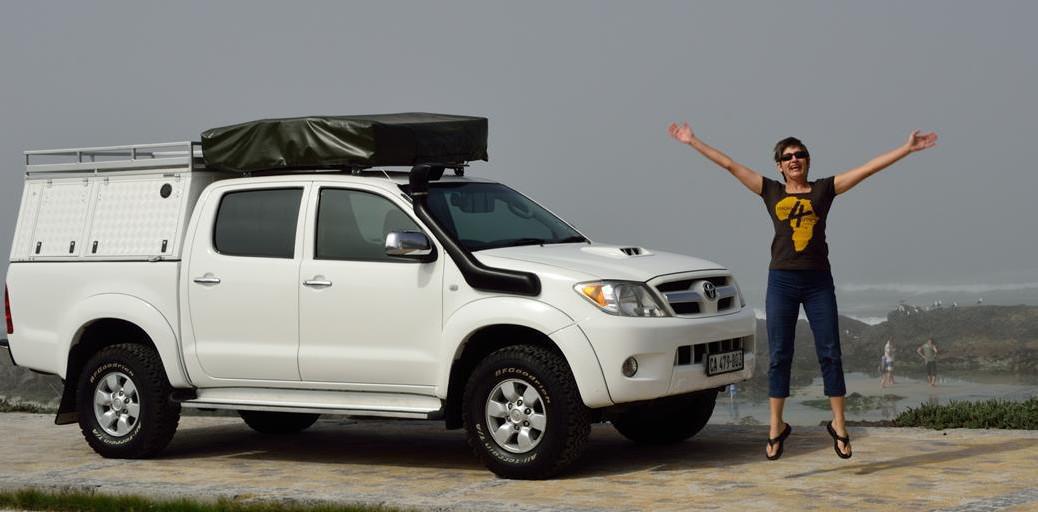We are standing over in Nairobi at Jungle Junction for a few days to catch up on washing, computer work, servicing the Hilux and replenishing our pantry. So it is the ideal time to post an article about the preparation of our vehicle for this trip.
As this would be the first 4WD that either of us had owned, we thought long and hard about our requirements and were grateful for all the advice that was so generously given from experienced owners.
Fuel efficiency immediately ruled out the Landcruisers and anything with an engine capacity greater than 3l. However, from one or two test drives, a 3l engine capacity has proven to be the minimum which would deliver the necessary oomph to power a heavily laden vehicle through all conditions.
Single cab, double cab or station wagon options were other factors complicating the choice, as was a roof top tent vs. the clamshell options and the ‘pop ups’, which don’t all fit all vehicles.
The big question: which brand to buy
We canvassed as many people as possible and as all owners love what they drive, it was soon evident that we would have to make up our own minds. After a month of looking at ads on 4×4 sites, Gumtree and Autotrader, we were almost as confused as at the outset.
One thing was becoming clear however: when Landrovers came up for discussion there was usually a lot of ‘static’ in the conversation:
‘They’re good, but don’t buy this model or one with that engine.’
‘They sell for way over their book value.’
‘If they have high mileage the necessary engine rebuild costs a fortune.’
‘If rebuilt make sure it wasn’t a cheap rebuild – look at the invoices.’
‘Landrovers are regarded as a bit of a joke further up Africa.’
So it went on, contrary to the huge number of these vehicles on the road in South Africa. I must admit that was I was totally in love with the idea of a Landy on a Africa trip and it took some convincing that there would be other great vehicles for a trip like this.
With our departure and the Christmas holidays approaching we became a bit desperate. Several fully kitted out 4×4’s were being driven south through Africa on their way to Cape Town and we contacted their owners to get the necessary information. Either we were too late or did too much due diligence on service history etc. and missed out on two possibilities. 4×4’s were in high demand at year- end and especially fully kitted-out overland vehicles.
By now the options had been cut to a Landrover Defender or a Toyota Hilux. Pete had recently returned from a motorcycle trip to Tanzania and was struck by the large number of Toyota’s up there, indicating that spares must be widely available. That and the late, but persuasive comments of several friends who had owned both types of vehicle finally swung the deal to Toyota. Now the challenge was to quickly find a reasonably priced, low mileage Hilux double cab 3l diesel D4D 4×4. Preferably white.
There were plenty of late models available, but all newish, expensive and not the sort of vehicles that we wanted to chop up and drill into. Through a Gumtree alert early one morning Pete got to view a 2008 Hilux with 115 000km on the clock. Fortunately he had crawled under every vehicle he had inspected and immediately noticed the collapsed front coil springs. Apart from that it drove well and the four-wheel drive system worked; however it was an urban truck and a far cry from being Africa ready.

Getting the Hilux ready
We took ownership of the bakkie, with re-tempered front springs, at the end of December, selling the standard canopy, nudge and roll bars and putting those funds towards six BF Goodrich 3-ply side wall, all terrain tyres. Immediately following this indulgence we read that one should put on the least expensive tyres that will do the job as they are definitely going to get trashed. So many opinions! Fortunately this model bakkie has 15 inch rims which meant a significant saving.

Air suspension
Rather than putting in a permanently hardened suspension on the rear axle, we opted for air bag suspension, each of which could be pumped up independently to raise the bakkie to the correct level, front and back, as well as from side to side. These have proved excellent and several travellers have since told us tales of broken leaf springs (even the famous Old Man Emu brand!) and how they wish they had discovered the inexpensive air suspension solution earlier.
The front of the vehicle was well catered for as the re-tempered coil springs were so hard that the fitment centre had to send the bakkie to their main branch to compress them sufficiently to get a new set of Munroe gas shocks on.
Long range fuel tank
A commercial long range fuel tank was fitted giving us a range of around 1400km between refills. Pete checked and replaced suspect pipe work in the system and installed anti-chafe cushioning where breather tubes were in contact with the chassis.
This long range tank has proved itself, enabling us to fill up in the larger centres where the fuel quality may be better. However, the downside of a large tank is that a load of poor fuel will take much longer to work through the system. According to locals in Kenya, poor fuel is common, so we need to carry spare fuel filters.
Snorkel
We initially decided against fitting a snorkel as we had no intention of any machismo driving feats and figured that we would rather just clean or change the air filter more often. But then we heard about a solo vehicle incident when the driver had to cross water out in the bush in Botswana. All went well until the front wheels suddenly dropped into the deeper summer flow channel. This submerged the standard air intake and stalled the vehicle. With crocs and hippos all around, it was a feat of agility and engineering to get the vehicle going again, where after, traumatised, they headed home!
On hearing this we placed the order for a snorkel and once it was fitted, heard other stories about the damage that water does to the electrical system. So we have thus far largely heeded the warnings of our 4×4 driving and bush mechanic instructors to only ‘take the vehicle into mud or deeper water at your peril’. Also, many people say they have snorkels to limit the intake of dust.

Bash plate
The decision on a bash plate followed a similar process and we have been thankful for this, particularly over very rocky sections and in the Serengeti, where deeply worn tracks have caused the vehicle to bottom out on several occasions.
Bull bar
We didn’t want a hefty bull bar with its consequential extra weight at the end of the vehicle but following stories about how such items command respect in city traffic, we got one built that didn’t weigh too much. This has proved more useful in deflecting branches away from the front of the truck. We also had struts welded to the chassis to beef up the running board attachments to prevent them shearing with all the vibration.

Raised front differential, transfer and gear box air breathers were already installed to help prevent water being sucked in when submersion instantly cools the transmission. With a little effort Pete fitted a similar breather on the rear diff, which inexplicably for a 4×4, didn’t have one.
We were extremely grateful to seasoned travellers Karl Lambrecht and Pete Shaw for showing us their bakkies, giving us ideas and allowing us to take pictures of their vehicles. That helped us tremendously in getting our vehicle fully equipped for our trip up Africa. Read more about the canopy and other add-ons in the next blog.


Good choice I think.
Hi Karin,
please send our regards to the german
is daar nog so baie japs wat daar oorbly ?
groete
fanie
namibia
Awesome and thank you. Good choice.
Now that only leaves you the equipment to show us! 🙂
It’s lined up for the next blog post Greg!